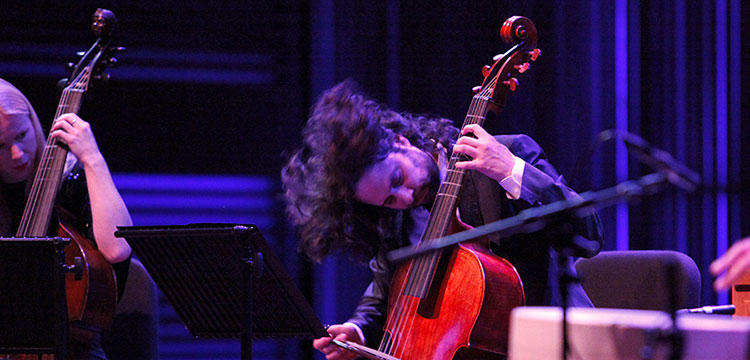VII Flamenco Biennale/Amsterdam
Triumph of the Accademia del Piaccere of Fahmi Alqhai in a “back to the future” in which instruments of the past show us the very “flamenco” contemporary horizon.
José Manuel Gómez Gufi
In the immense hall of Amsterdam’s Muziekgebouw you could hear music coming from the first floor where some one hundred and fifty people who were listening to explanations about the concert we were about to see: La Niña de los Peines and a Moroccan singer. It was a half-hour until the concert, and in this place culture is taken seriously, people do their homework. At that hour in the restaurant, desserts, coffee and drinks were being served. I learned my lesson about local times and had had spaghetti at six p.m.
The Seville musician Fahmi Alqhai presented his group Accademia del Piaccere and the show “Romances entre Oriente y Occidente” which starts out with the sound of an organ and a violin, transporting us to the cathedrals (later on we’ll understand that that is the reigning sound between the 15th and 17th centuries), percussionist Agustin Diassera has one hand on a tambourine (typical in Galician and Berber societies) and another on a cajón (from Peruvian blacks, used by flamenco artists since 1980). There are two string instruments, one guitar played by the Seville artist born in Holland, Tino van der Sman, and a four-stringed Persian instrument, the setar, with a metallic sound, strummed by Kiya Tabassian.
The concert hall has the feel of a cathedral, so when we hear the voice of soprano Marivi Blasco, I spend some time speculating on where that voice is coming from, and when it’s answered by Tunisian singer Ghalia Benali, I find myself glancing heavenwards and…there they are, face to face, in a theater box high up. Seeking out similarities between cultures.
Fahmi is one of the great interpreters of the violin, and his way of understanding “historic music” is with vast imagination, so you feel like you’re in the movie “Back to the Future”, about to sing Johnny be Good to Chuck Berry. So rev up the flux capacitor and let’s head for the expulsion of the Moors from Granada (1492) when they took refuge with their songs and their culture in the Alpujarra mountains.
What has this all got to do with flamenco? That’s what the purists are wondering, and we answer them with more questions: “Who are we? Where do we come from? Where are we going?” Spain’s Reconquest resulted in the expulsion of Moors and Jews (1492), followed years later by that of the converted Moslems (1609/1613) which is as if we were now to kick out the supporters of Barça and Real Madrid and nationalize Amazon (and don’t forget the attempt to expel and/or exterminate the gypsies with the Great Raid of 1749).
Let’s get back to the music, because after a long suite in which we heard the equivalent of Moors and Christians, the music itself gradually took over the musicians, even moving into a state of trance, especially thanks to Ghalia Benali who began to whirl like a Dervish possessed by the best spirits in history, and that’s when the magic of Ziryab (789 Mosul/857 Cordoba) the patriarch of guitarists in the hands of the setar with the entire group finding a very contemporary groove, the sufi music appeared and the poems of Ibn Arabi (Murcia 1165/Damascus 1240) and the kind of things we ought to be hearing in history class. The group’s impact is so powerful that it cannot help but influence the world of flamenco, although it might only be to transmit that feeling of joy and freedom. In actual fact it’s a lesson in pleasure and beauty.
And once again the Dutch audience gave a standing ovation with wild applause, and as you leave the theater they offer you a glass of wine (or juice) and a crowd of people remain, enjoying the memory of the concert. Afterwards, a flamenco couple fills in the wait for an encounter with the artists in which Ghalia Benali reveals that in addition to a poem of Ibn Arabi, she sang that of a contemporary poet, a refugee from the here and now.
Photos by © Marjon Broeks
